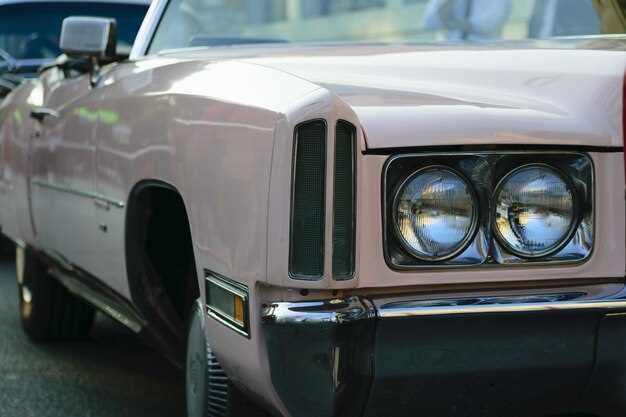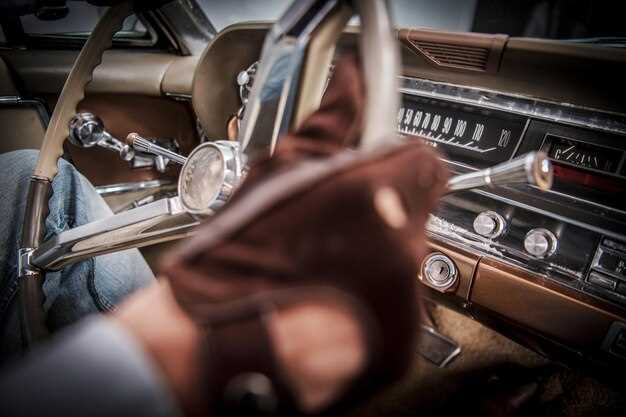
Purchasing a classic muscle car is an exhilarating journey that combines nostalgia, performance, and style. However, before diving into the world of muscle cars, there are several key factors to consider to ensure you make a sound investment. This isn’t merely about selecting a car that looks good; it’s about understanding the intricacies that come with owning a piece of automotive history.
First and foremost, thorough research is essential. Familiarize yourself with different muscle car models, as well as their specifications, performance capabilities, and historical significance. Each model has its unique characteristics that cater to specific preferences. Knowing what to expect will enable you to make an informed decision and avoid potential pitfalls.
Additionally, it is crucial to inspect the condition of the vehicle meticulously. Factors such as rust, engine performance, and the authenticity of parts play a monumental role in the overall value of a classic muscle car. Whether it’s a Chevrolet Camaro, Ford Mustang, or Dodge Charger, understanding the mechanical and aesthetic condition will help you gauge whether the car is worth the investment.
Lastly, considering the associated costs of ownership is vital. Classic muscle cars can demand high maintenance, insurance, and fuel costs. It’s essential to have a clear understanding of what you’re willing to spend long-term to ensure your passion remains sustainable. By examining these factors, you can enjoy the thrill of owning a muscle car with confidence.
Evaluate the Vehicle’s History and Documentation

When considering the purchase of a classic muscle car, it’s essential to thoroughly evaluate its history and documentation. This assessment can provide you with crucial insights into the vehicle’s past, helping you make an informed decision. Start by obtaining the vehicle identification number (VIN) and running a history report. This report can reveal important details such as previous owners, accident history, title statuses, and any reported thefts.
Next, examine the car’s maintenance records. Well-documented service history can indicate how well the vehicle has been cared for over the years. Look for receipts that detail routine maintenance and any significant repairs or modifications made to the muscle car. Comprehensive documentation can significantly enhance the car’s value and give you confidence in its condition.
Additionally, verify the authenticity of the car’s documentation. Cross-reference the information provided by the seller with third-party sources. This can help identify any discrepancies that may indicate potential issues or misrepresentations. Pay attention to details such as matching numbers for the engine and transmission, as these can be key factors in defining the car’s originality.
Finally, consider the presence of any classic car certifications or appraisals. Having an independent evaluation can serve as reassurance regarding the muscle car’s quality and authenticity. By thoroughly examining the vehicle’s history and documentation, you can avoid potential pitfalls and ensure you are making a sound investment in your classic muscle car.
Inspect the Body and Undercarriage for Rust and Damage
When considering the purchase of a classic muscle car, thorough inspection of the body and undercarriage is critical. Rust is one of the most common issues that can plague older vehicles, and it often goes unnoticed until it has caused significant damage. To avoid costly repairs, here are some essential tips for your inspection.
Start by examining the exterior body panels. Look for any signs of rust, particularly in wheel wells, door edges, and around the windshield. Pay close attention to paint inconsistencies that might indicate previous bodywork or hidden rust. Surface rust can often be treated, but structural rust is a much more serious concern that can compromise the integrity of the vehicle.
Next, move to the undercarriage. This is where corrosion can often be most severe, especially in regions with harsh weather conditions or where road salt is commonly used. Look for rust spots and flaking, particularly on critical components such as the frame, suspension parts, and exhaust system. A strong flashlight can help illuminate hard-to-see areas.
Additionally, check for any signs of previous repairs. Welding marks can indicate past attempts to fix rust damage. While some restoration work is acceptable, excessive repairs can signal deeper issues that might require more extensive restoration efforts. If any rust damage is found, assess the extent and consider how it aligns with your budget and willingness to take on restoration projects.
Conducting a thorough inspection of both the body and undercarriage will provide valuable insights into the muscle car’s condition, helping you make an informed decision before your purchase. Always remember, the state of the vehicle’s structure can significantly affect both its performance and safety on the road.
Assess the Engine and Mechanical Condition

When considering the purchase of a classic muscle car, one of the most critical factors is the engine and mechanical condition. A thorough assessment can save you from unexpected repairs and ensure that your investment is sound. Here are some essential tips to evaluate:
- Inspect the Engine: Look for any signs of leaks, corrosion, or wear. Pay attention to the oil condition; it should be clean and free of contaminants.
- Listen for Unusual Noises: Start the car and listen for knocking, ticking, or excessive vibrations. These can indicate underlying issues with the engine.
- Check Compression: Conduct a compression test to gauge the engine’s health. Consistent compression across all cylinders is crucial for performance.
- Examine the Exhaust: Look for excessive smoke or unusual colors; blue smoke indicates oil burning, while black smoke can denote a rich fuel mixture.
In addition to the engine, the overall mechanical condition of the car is essential:
- Tires and Suspension: Inspect the tires for tread wear and check the suspension components for damage or rust.
- Brakes: Check the condition of the brake pads, rotors, and lines. A muscle car should provide reliable stopping power.
- Transmission: Test the transmission for smooth shifting. Any hesitation or slipping can signal problems that need addressing.
- Electrical Systems: Ensure all lighting, gauges, and electronic components function well. Malfunctions here can indicate larger issues.
By carefully assessing the engine and mechanical condition of a classic muscle car, you can make a more informed decision, ensuring that your new ride offers reliability as well as performance.











